As part of our new website we have listed 3 principles our work is guided by; Accessibility, Inclusivity and Sustainability.
But how do we achieve this in practice? What systems do we have in place to measure ourselves against these goals? We’ll break down some of the steps we are taking to ensure our projects deliver on these principles, starting with sustainability.
Embedding sustainability from the very start
Our project briefings help to set out objectives and requirements for each and every project. At this stage, we consider the environmental implications of these objectives. Among the considerations we make are:
- How will the project be delivered? Can the project be delivered in a more sustainable way?
- What resources are required in order to deliver the project successfully?
- Are we designing for print or for digital?
- How can we deliver solutions that have longlasting impact?
Sustainability at every stage
At every stage of the process, we consider the sustainability implications of our creative decisions. This can include:
- Deciding whether or not the design needs to be printed and if it does, if we can print at a smaller size to reduce materials usage
- If we do print, ensuring we use water or plant-based ink, recycled or FSC certified paper
- If the material is for an event, avoid dates and specific references so it can be used again and again
- Using media carefully, being selective with the use of larger photos and video where a smaller image or vector graphic would provide the same impact
- Offering plain text variations of designed documents for those that need to print them
Reducing footprint of digital projects
The internet produces as much CO2 as the global airline industry, but making sustainable choices can have a significant impact on websites carbon footprint.
- Does your hosting provider use renewable energy?
- Can we optimise images and video to reduce file size?
- Can we improve the user experience to reduce the number of page loads?
We use carbon measuring tools such and the Website Carbon Calculator and Digital Beacon to optimise and minimise the impact of each of our website.
For digital publications, we reduce the size of files we share whilst retaining quality and resolution. We utilise white space and simplify layouts, helping to streamline designs and convey messages without additional visual clutter.
In Summary
Incorporating sustainability principles from start to finish helps us to deliver projects with a reduced environmental impact. Look out for our Guide to Sustainable Communications, which will provide further practical considerations to implement sustainability decisions throughout the design process.

Tim Brann – Senior Designer
Tim is a multi-disciplinary designer, with many years of experience designing graphics with impact and seamless user experiences. He holds a BSc in Product Design from Brunel University London. Initially designing consumer products, he has since worked on a diverse range of projects from creating brand guidelines to website re-design and creation, animated video, event collateral and strategic brand positioning documents both for startups and large companies such as WWF, Motorola and Pyrex. Tim is passionate about the use of design as a tool for positive social change, and his main areas of interest are racial inequality and children’s social care.




